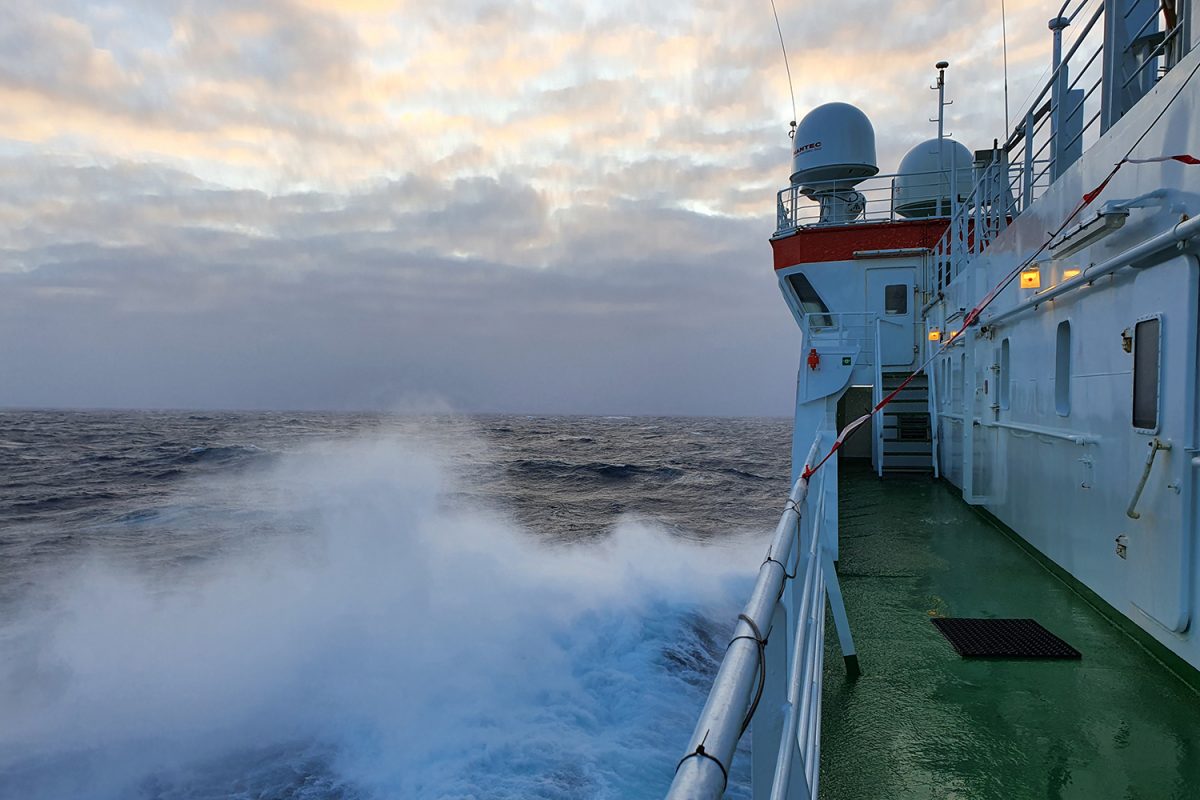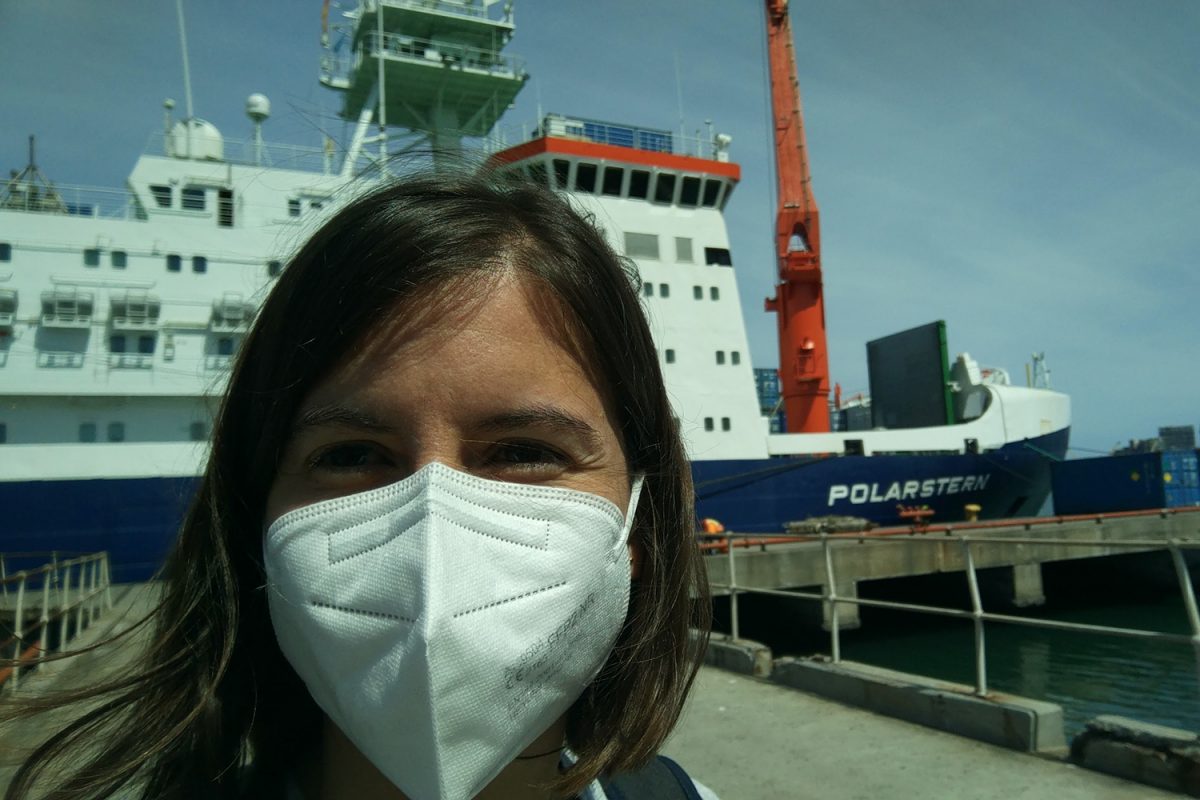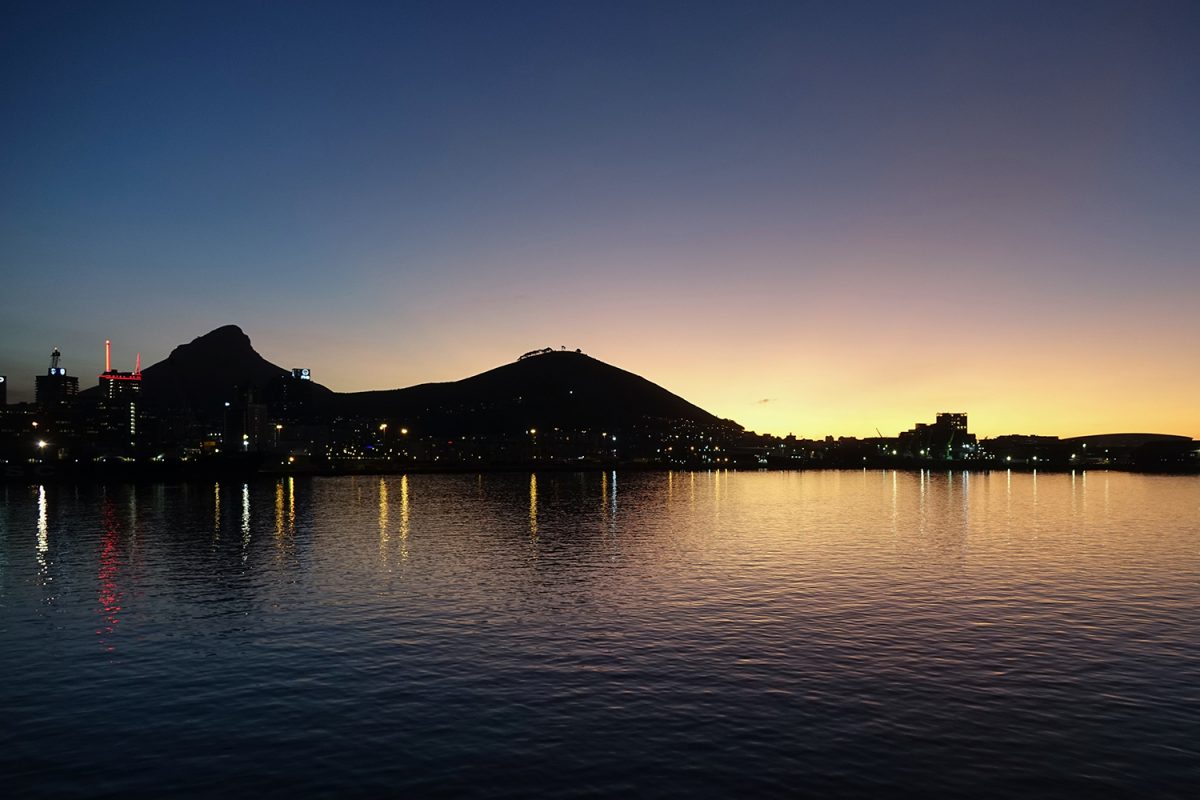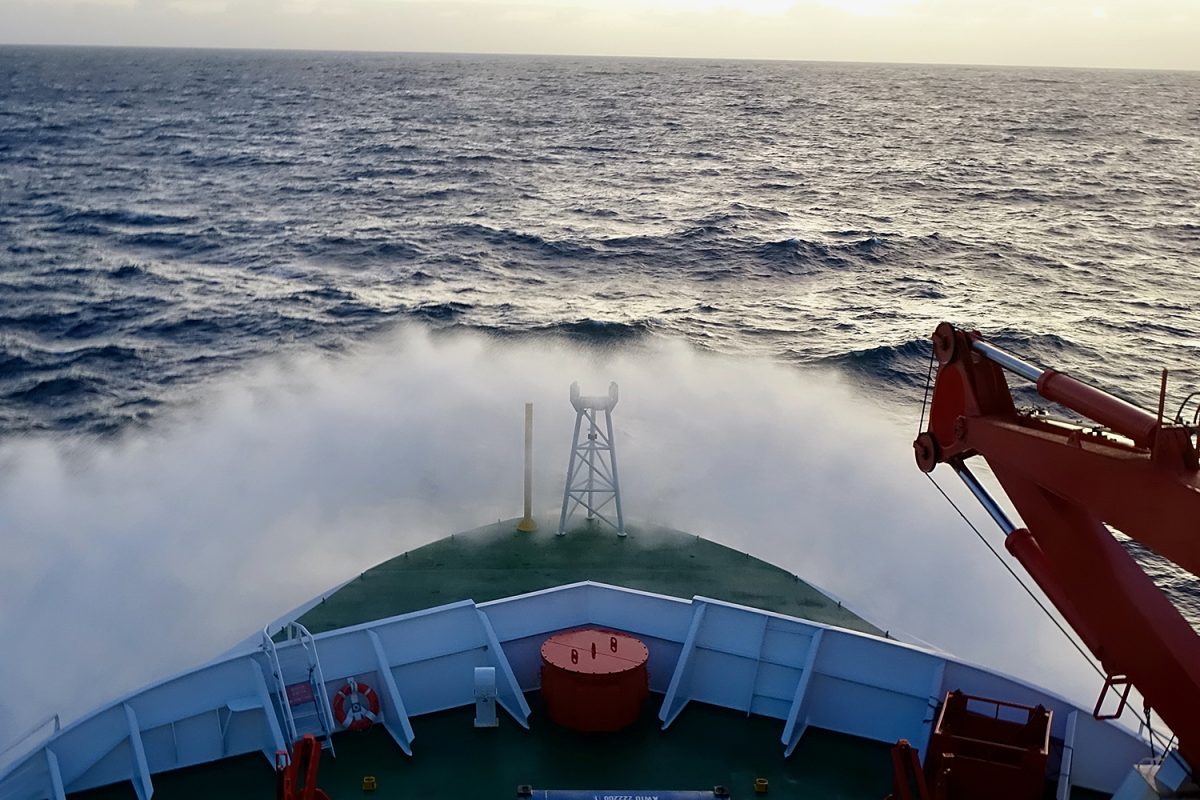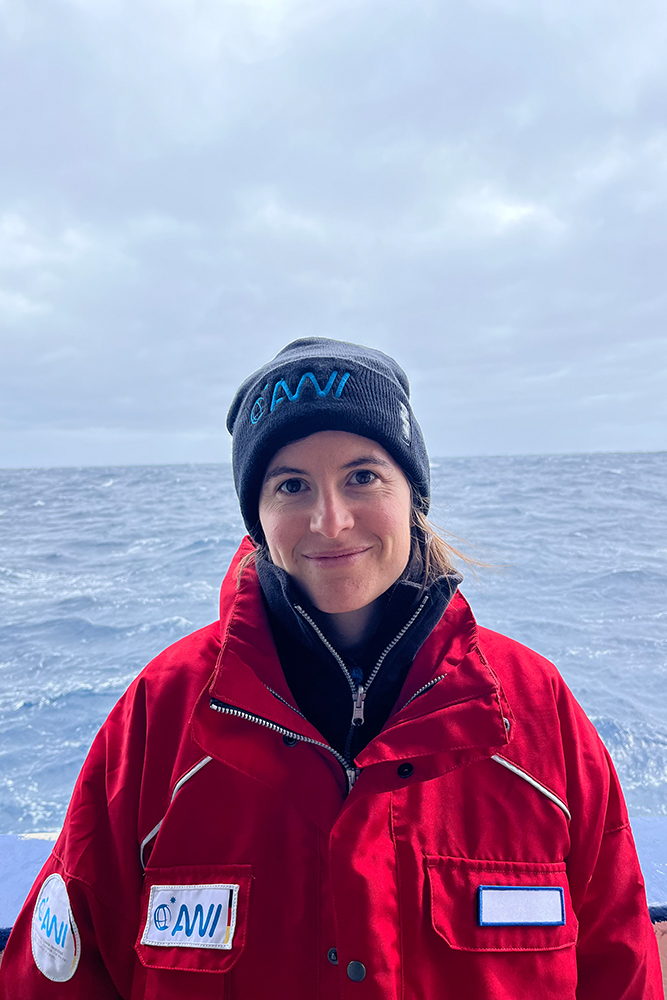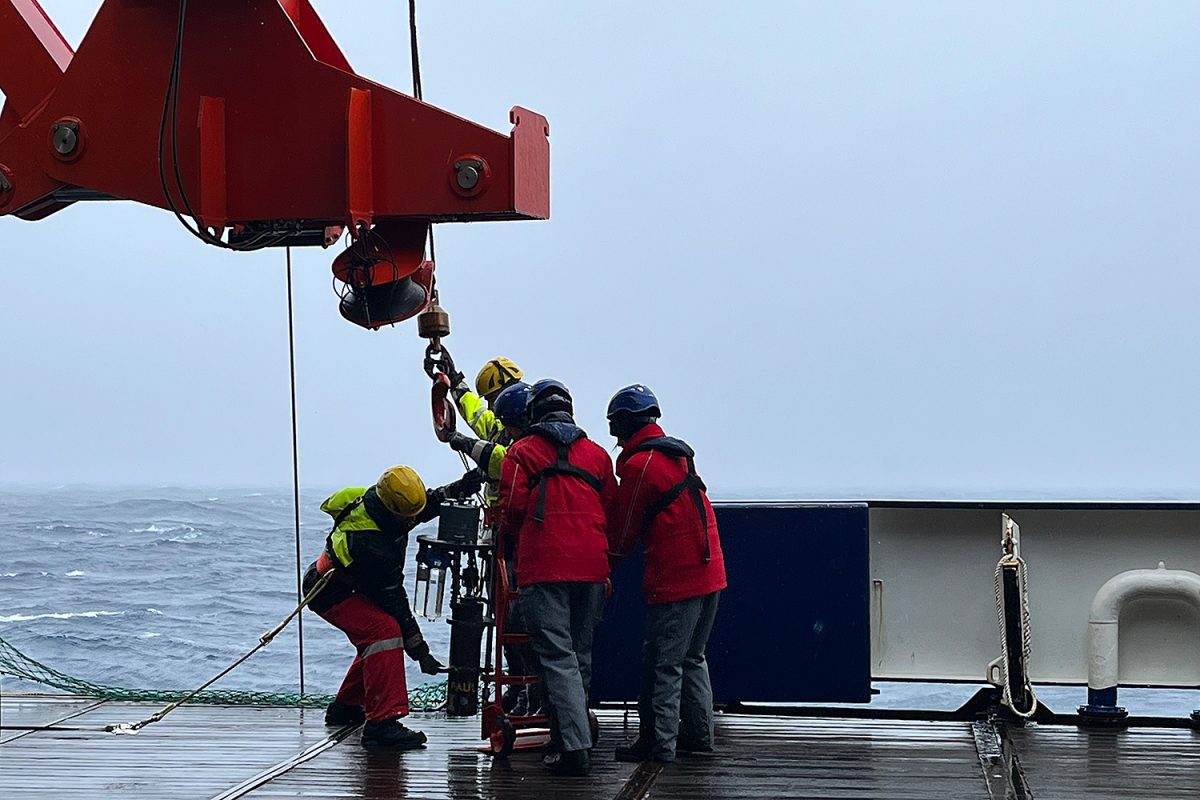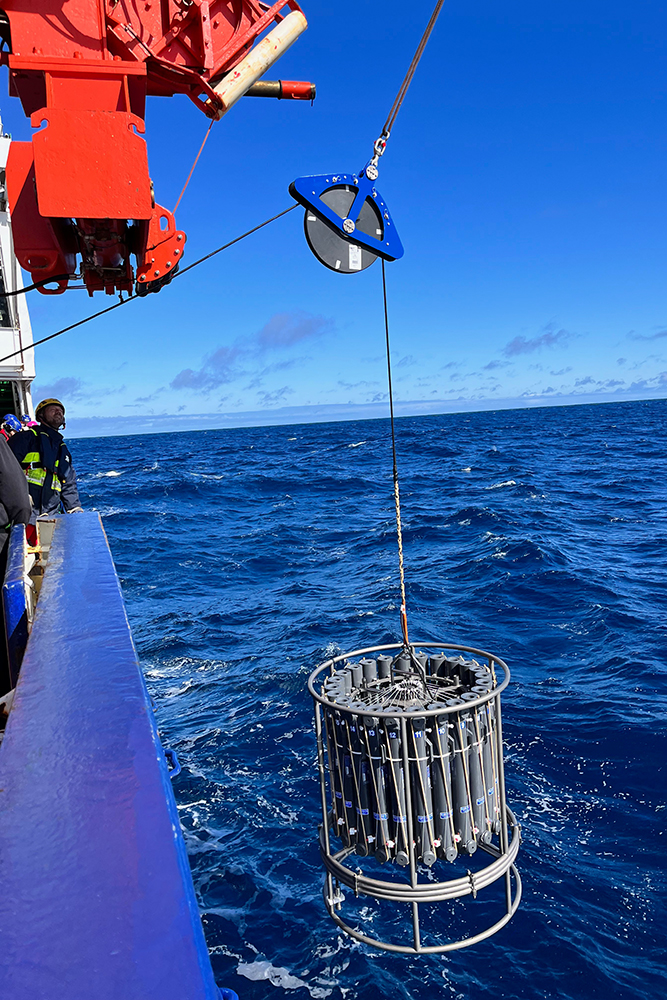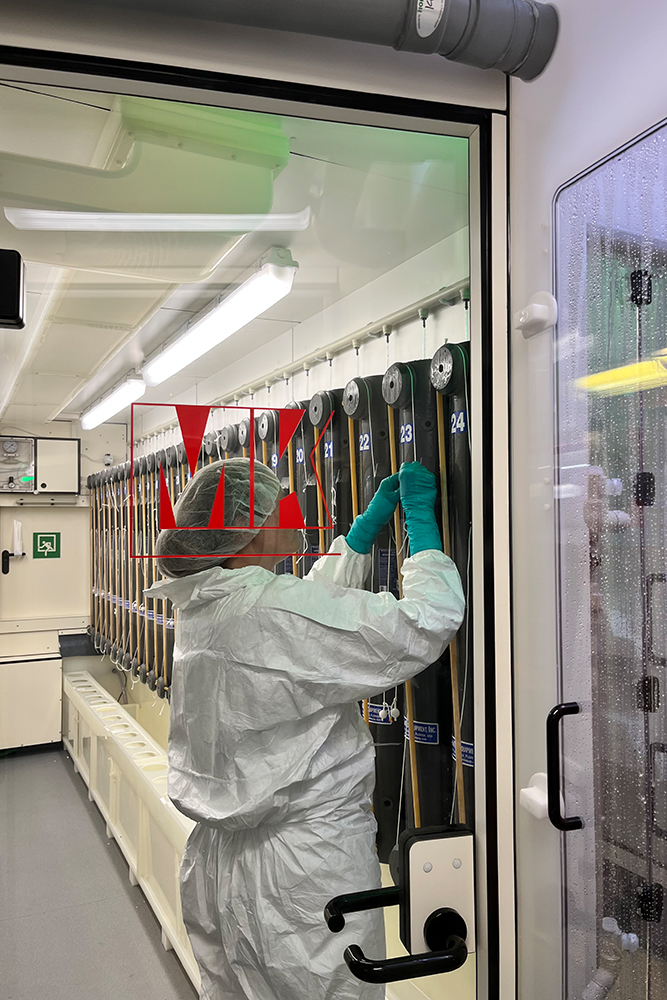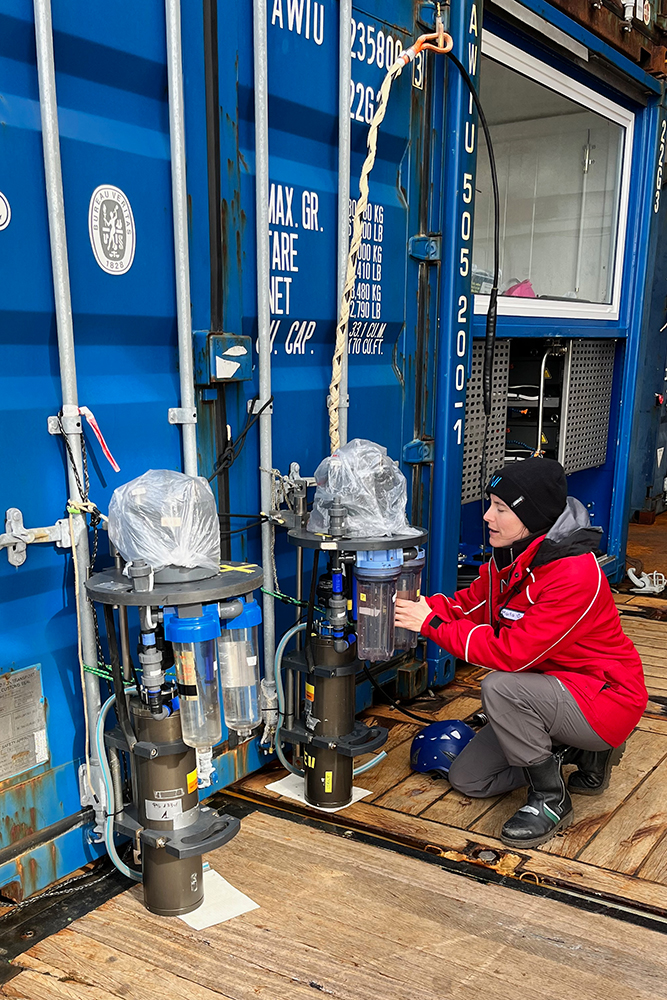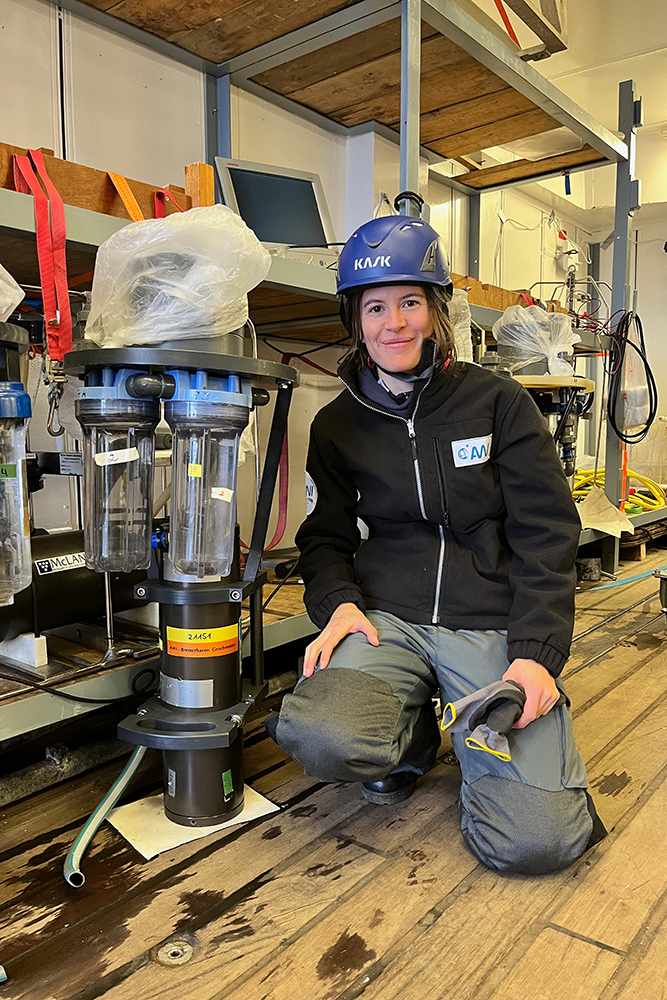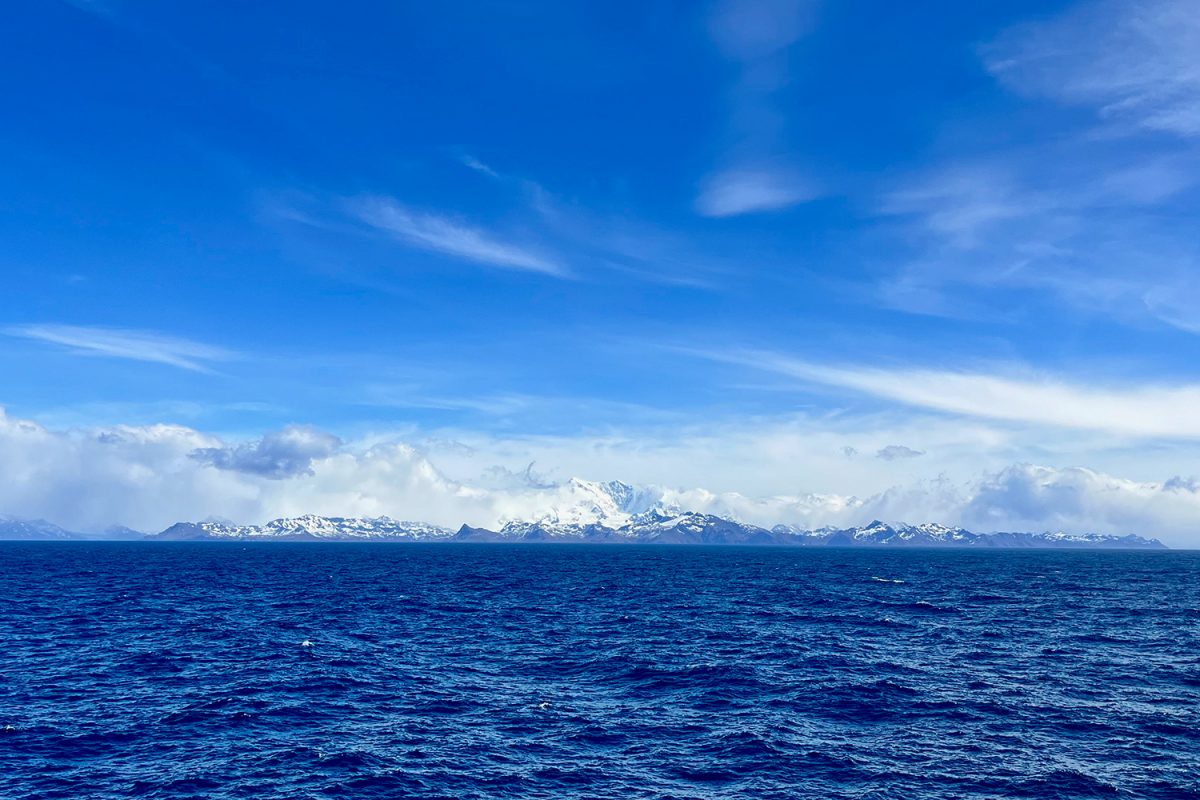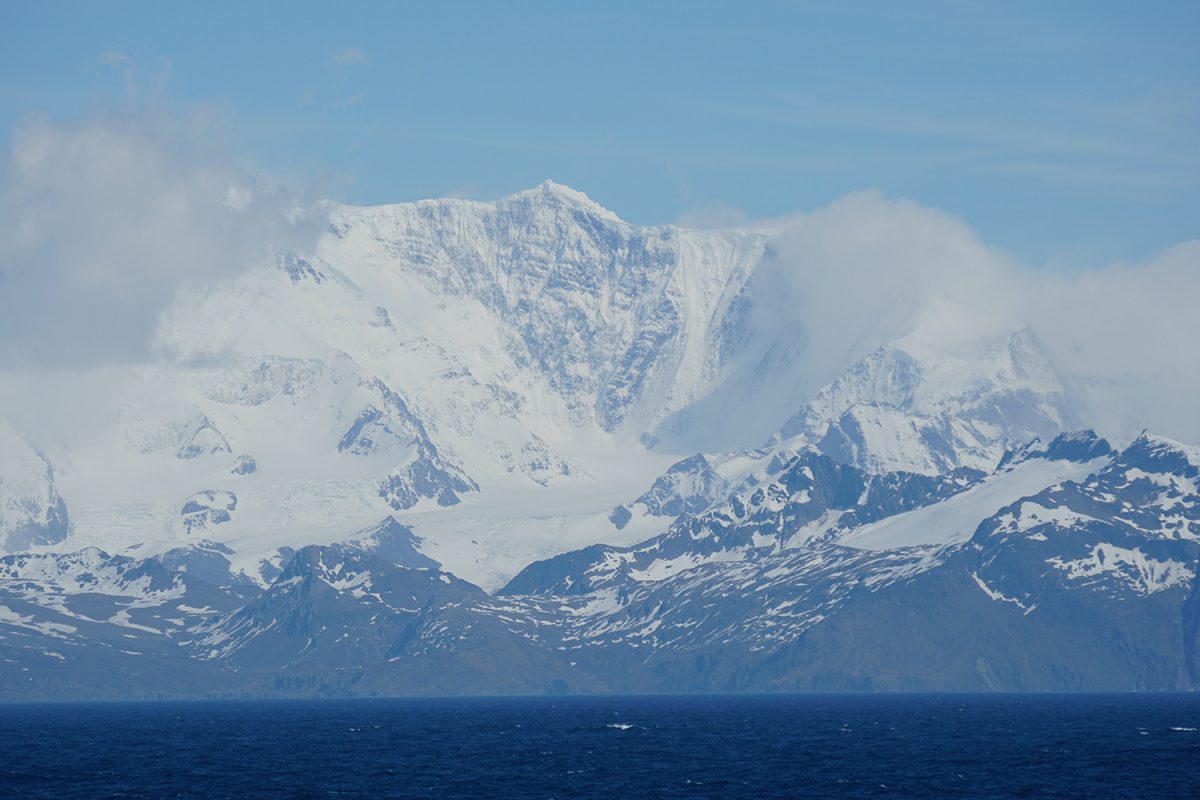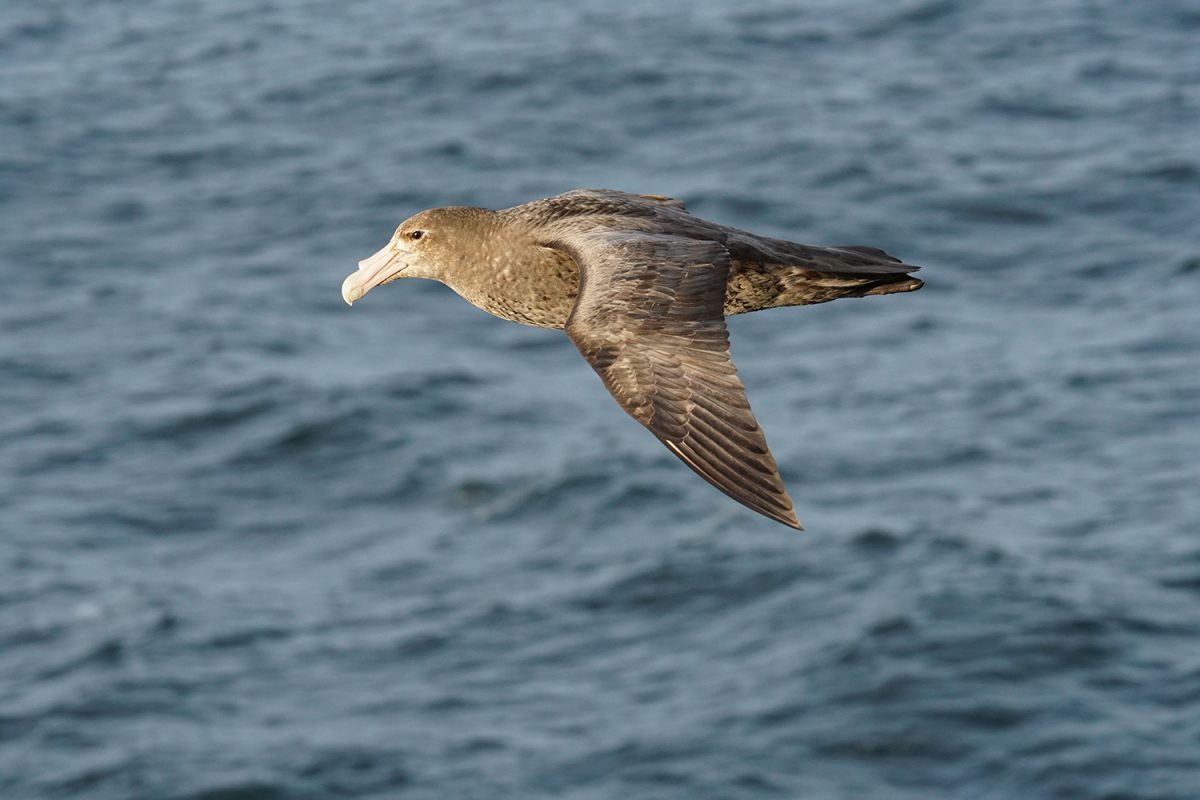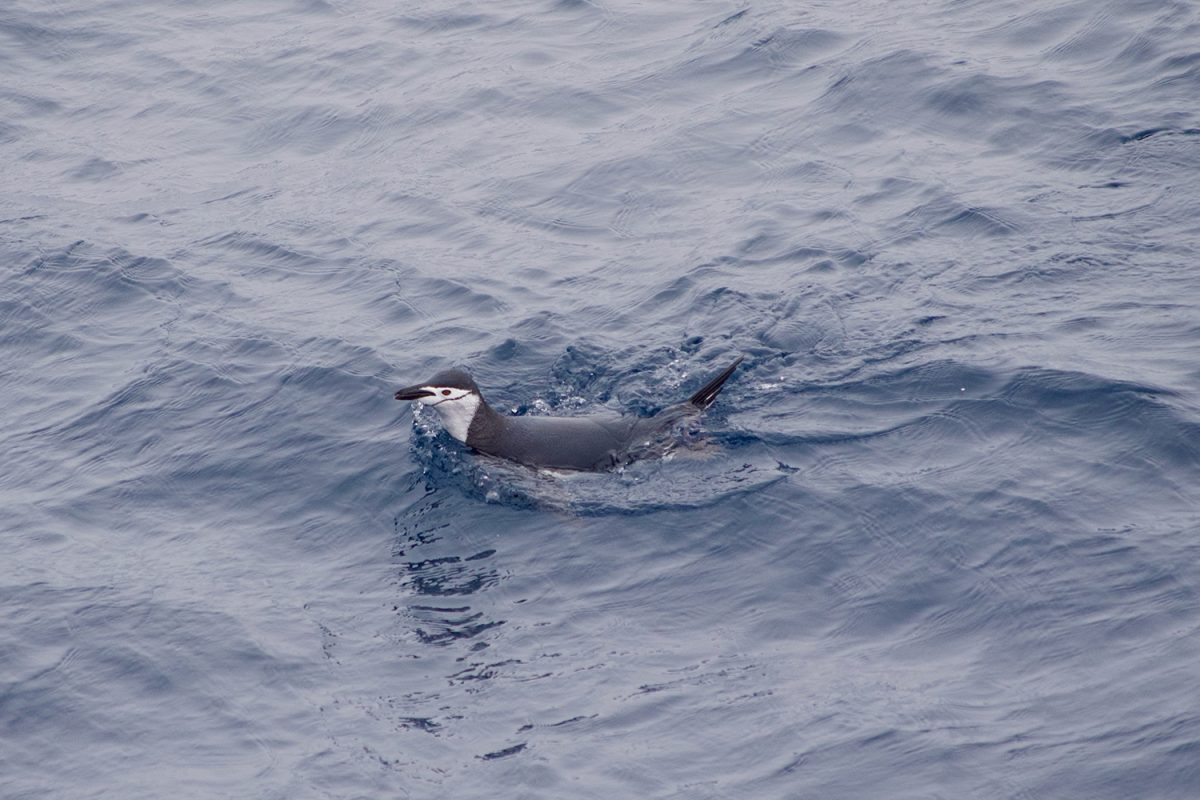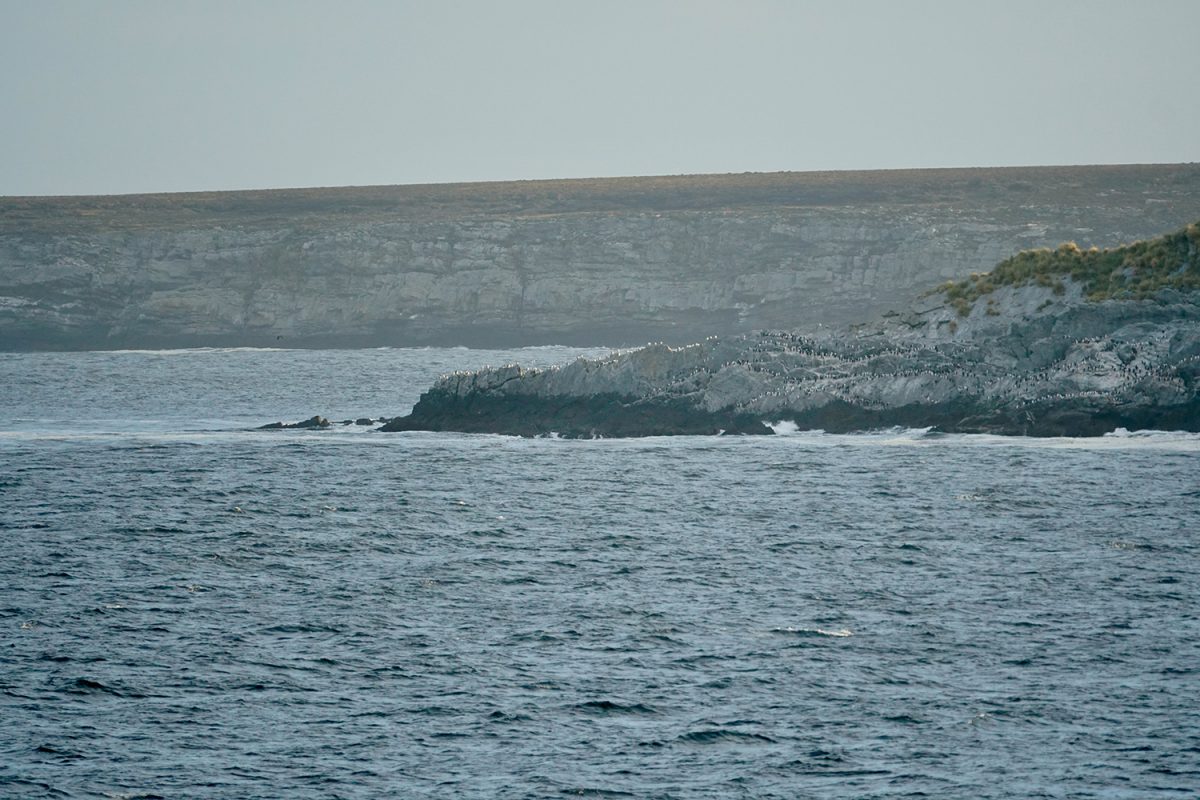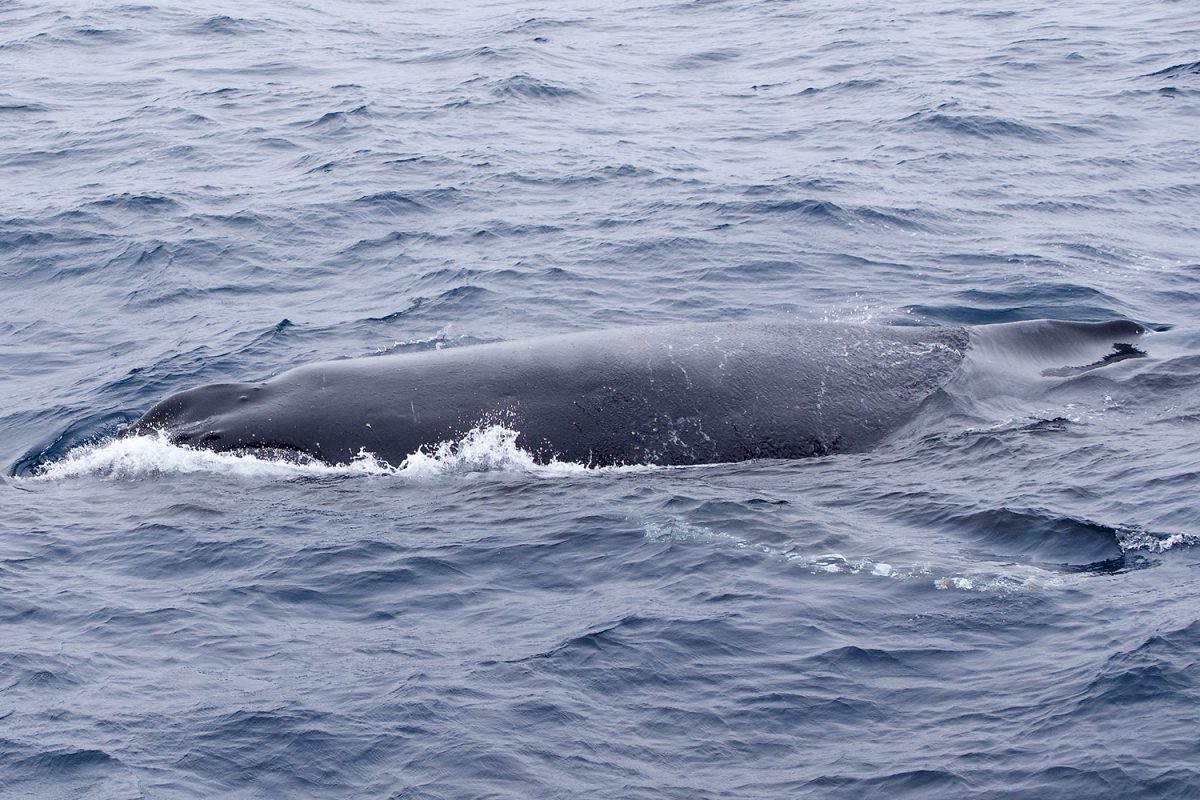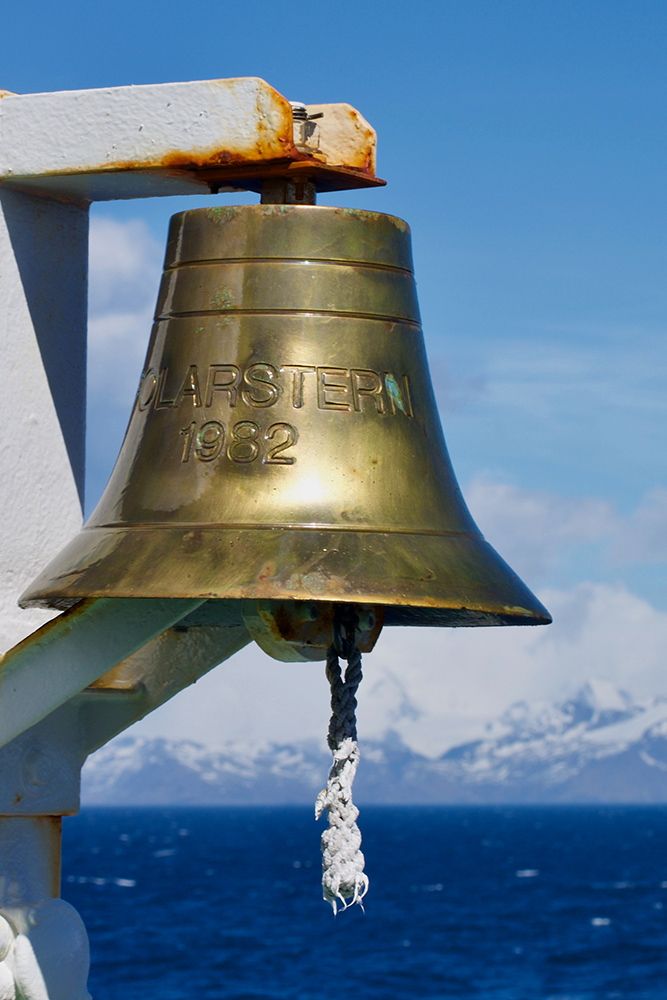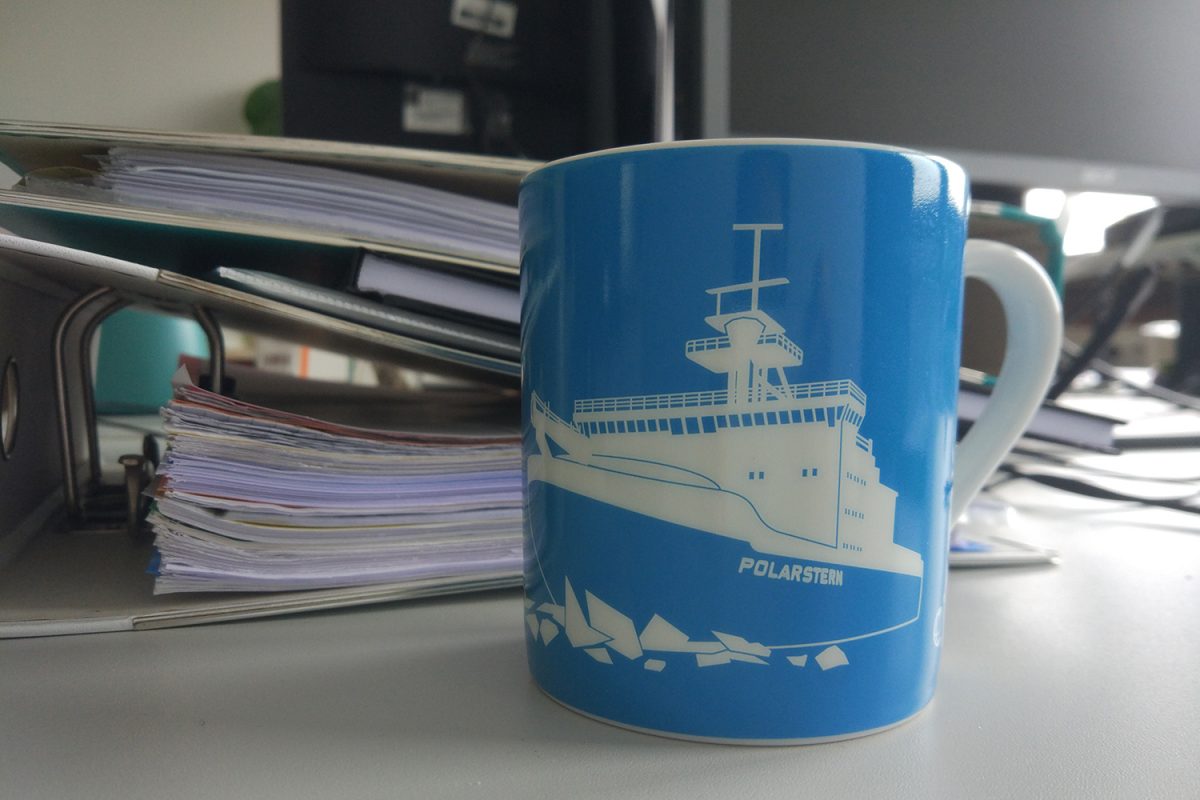Marine sediments from a depth of 8,000 metres Dr Marta Pérez Rodríguez on the “Island Impact” Expedition
Solid ground under her feet again: After seven weeks on board the research ship “Polarstern”, Dr. Marta Pérez Rodríguez is back in Braunschweig. As part of the “Island Impact” expedition, the environmental scientist from the Institute of Geoecology collected water and sediment samples in the South Atlantic for her research on the mercury cycle. Upon her return, she told us about doing research in stormy conditions, whales, penguins and a room full of potatoes.

The expedition members at a glance: Scientists and crew members on board the “Polarstern”. Photo credit: Jonas Bolduan
“Finally we are on our way to the Antarctic Ocean. Everyone was excited and went outside on the different decks to see the Polarstern leave the harbour. It was a very beautiful moment. When the lights from Cape Town became barely visible, the stars appeared in the sky. Even the Southern Cross was visible. We moved south-westwards. Then we were granted access to our workplaces and the laboratories. During the night we could feel big waves for the first time! They will accompany us for most of our journey. After breakfast, we took the cargo out of the containers with the help of the crew. And after that we started preparing the labs.”
For Marta Pérez Rodríguez, a further 47 scientists, and 50 crew members, this marked the beginning of a stormy research journey in the largest ocean current on Earth, the Antarctic Circumpolar Star. Some of the highest concentrations of phytoplankton (single-celled plants in surface water) occur around the South Georgia archipelago in the South Atlantic east of the east coast of South America. One of the goals of the expedition was to investigate the effects of iron input on productivity in the Southern Ocean, as well as sources and pathways of other nutrients. Thus, the Environmental Geochemistry working group of the Institute of Geoecology at TU Braunschweig wanted to learn more about the marine mercury cycle and explore where the trace metal is deposited in the depths of the ocean.
Research around the clock
To this end, Marta Pérez Rodríguez took various samples during the seven-week expedition led by the Alfred Wegener Institute, Helmholtz Centre for Polar and Marine Research (AWI): for example, near the South Sandwich Islands, marine sediments at a depth of up to 8,000 metres and water samples at a depth of 7,000 metres were taken. “This is extraordinary!” The scientist is still excited about being able to obtain such samples for her research. Even if it meant for her to sometimes get up in the middle of the night. Research was carried out around the clock on board the “Polarstern”. When the ship reached the targeted sampling location, where the researchers expected to find a lot of phytoplankton, for example, it meant getting up at three in the morning.
Exposed to the wind of the Antarctic Ocean
“Most of the time we worked with great concentration for eight to nine hours,” Rodríguez recounts. “I actually had to be careful not to forget about eating food.” And that, she says, was particularly good. In addition to hot meals, the expedition participants were provided with salads, fruit, freshly baked bread and cakes. “You consume more calories on a research trip like this than you normally would.” The “Polarstern” kitchen team was prepared for this: Around 10,000 eggs were stored on board and whole mountains of potatoes were spotted in one room.
After dinner, board games and films were often on the agenda or a workout in the sports room. And in between the research work, the scientists could simply let their eyes wander over the deep blue ocean and watch whales, penguins, seals and dolphins. The table tennis table, on the other hand, had to remain unused. The waves often moved the ship too much for that. In the Antarctic Circumpolar, the “Polarstern” found itself in one of the stormiest regions on earth. A challenge for their scientific work. Strong winds repeatedly prevented working with the equipment on board. “Most of the time I worked outside for an hour at a time and then warmed up again.” Marta Pérez Rodríguez quickly got used to the rocking of the ship: “After two weeks you don’t notice it any more”.
Samples from the “Moonpool”
Despite stormy seas and initial problems with the measuring equipment, Marta Pérez Rodríguez was able to take numerous samples. “We were really lucky to find exactly the spot with the highest concentration of phytoplankton that we were looking for.”
In addition, the Triaxus was in use, a measuring device that is towed through the water behind the slowly moving “Polarstern” and measures temperature and salinity, among other things. The scientists took further samples of algae pigments, nutrients or the species composition of the phytoplankton in the so-called “moon pool”. This opening in the ship’s hull is about one metre in size and provides direct access to the water. These additional data are also important for the interpretation of Marta Pérez Rodríguez’s own investigations. Her samples – perfectly cooled – are still on board the “Polarstern”. At the end of April 2023, she can collect them in Bremerhaven and then analyse them.
New projects through the expedition
For Marta Pérez Rodríguez, the “Island Impact” expedition was one of the most exciting experiences as a scientist. Her conclusion after seven weeks on the ship: “I learned a lot, including how to deal with working outside the ‘comfort zone’, i.e. in a completely different environment, with a high level of commitment and always striving to achieve the best results. The cooperation with the other scientists on board was very good. We supported each other and everyone had the opportunity to get their research instruments in the water and take samples. Through our joint work, I’m sure many new projects will emerge.” Would she take part in such an expedition again? “Definitely, maybe in two or three years. After all, there’s a lot of logistics and organisation attached to it – for the whole working group.” Where would you like to go then? “Preferably near the Arctic.”

